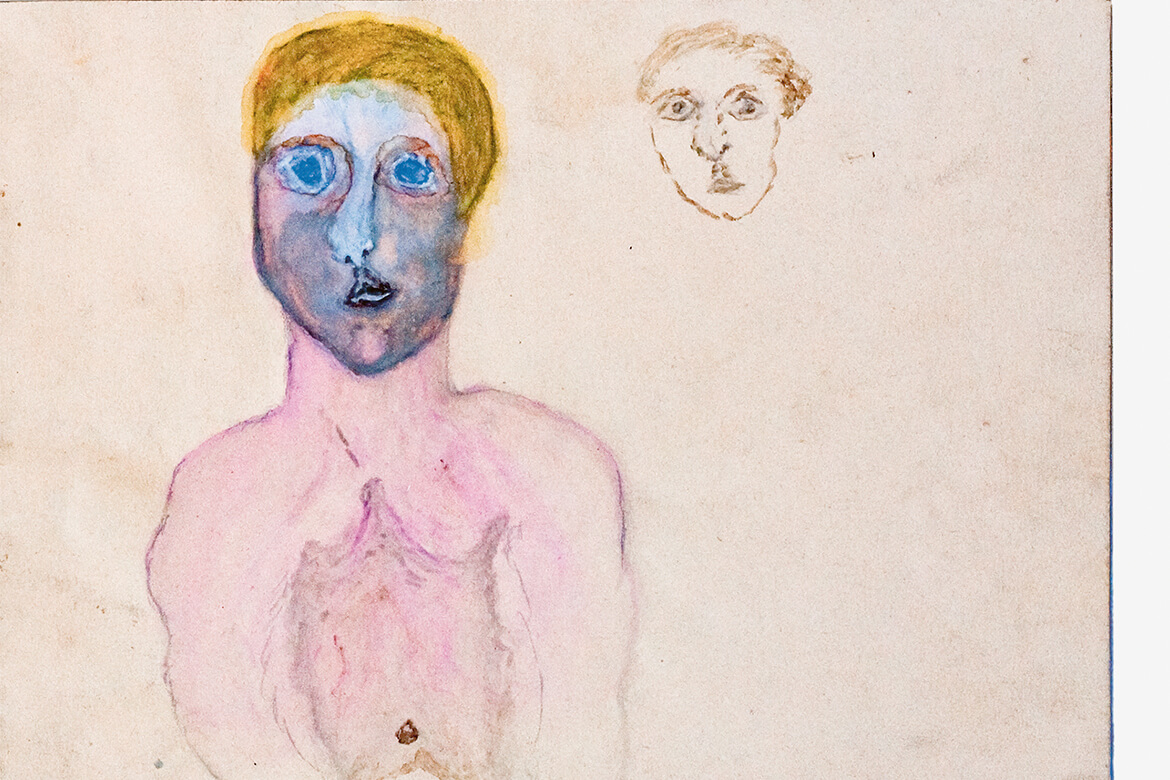Depression: therapy by algorithm
A new statistical procedure is using machine learning to identify the relevant factors for an effective treatment. If it succeeds, it would be a big step for personalised medicine.

Depression can have many causes, but there are far fewer therapies for it. | No title, one page from a drawing book with 18 pages, oils, double page 18,5 × 23,5 cm, undated, Breitenau Collection, inventory number 105, © shelfmark: Staatsarchiv Schaffhausen DJ 39/2432
Depression can have many different causes. For J. K. Rowling, the author of Harry Potter, it was the result of a failed marriage. For Bruce Springsteen, a difficult relationship with his father had a major impact. But the therapy we use to treat it is pretty universal: anti-depressants, behavioural therapy or a combination of the two. But just how similar are a veteran rock star and a vegan novelist?
In personalised medicine, our individual characteristics are assessed in order to determine which ones would react – or not – to a particular form of therapy. For depressives, these characteristics include secondary illnesses, lifestyle, genetic prerequisites, the parental home, or relationships in crisis. In order to identify those relevant to a specific therapy, a research team from the University of Zurich has developed a new statistical procedure that enables them to sift through large, unwieldy volumes of data to find the factors that can influence whether or not a therapy is effective.
New evaluations of old data
“Our method specialises in finding just such effect modifiers, all on its own”, says Simon Foster, a research associate in the group. In classical statistical methods, you need a certain idea of what factors might influence the therapy. You have to select them by hand, as it were, before you begin your analysis. Their new method, called ‘Random Forest’, seeks out these influencing factors on its own, with the help of machine-learning algorithms. In this way, the program can even find influencing factors that no one had imagined existed in advance – and can even find combinations of them.
In order to test the Random Forest method, Foster’s team had it comb through the data for the study ‘Treatment for adolescents with depression’. Back in 2007, this study of over 300 adolescents suffering from depression had proven that they profited more from a combination of the anti-depressant Fluoxetin and cognitive behavioural therapy than from just one of the two forms of treatment. But did certain patients perhaps have certain characteristics that meant they would have benefited more from undergoing just behavioural therapy? Perhaps because their bodies could not tolerate Fluoxetin properly?
No, they didn’t. Using Random Forest, Foster’s team did find a few variations. For example, the age of the adolescents, their family income, additional illnesses and the duration of their depressive episodes could all have had a greater or lesser impact on the efficacy of their therapy. But the combination of the two helped all patients best. “From the perspective of personalised medicine, this wasn’t the result one might hope for”, says Foster.
“This study is extremely exciting and highly innovative”, says Katharina Schultebraucks, a postdoc at New York University. She is working with similar methods. “Machine learning is providing personalised medicine with a lot of potential”. However, it does mean that you have to plan a study differently. Up to now, groups were compared that were kept as similar as possible to each other– regardless of whether they were taking a drug or not. But with the machine-learning procedure, the opposite is the case. “You get the best results from a large amount of data that depicts the clinical phenomenon as precisely as possible and is just as heterogeneous as clinical reality”.
Schultebraucks believes that machine learning offers us a great opportunity to recognise new connections among the influencing factors of depression. She is reckoning with “phenomenal progress”, and the abovementioned study is an important contribution to this. However, the current state of data is still “far too meagre”. The costly, foresighted studies with the appropriate numbers of patients would require many institutions to start working together, and the institutions subsidising research would have to strike out on new paths. Only then would it be possible to create the right datasets, and personalised medicine might at last become a reality.




